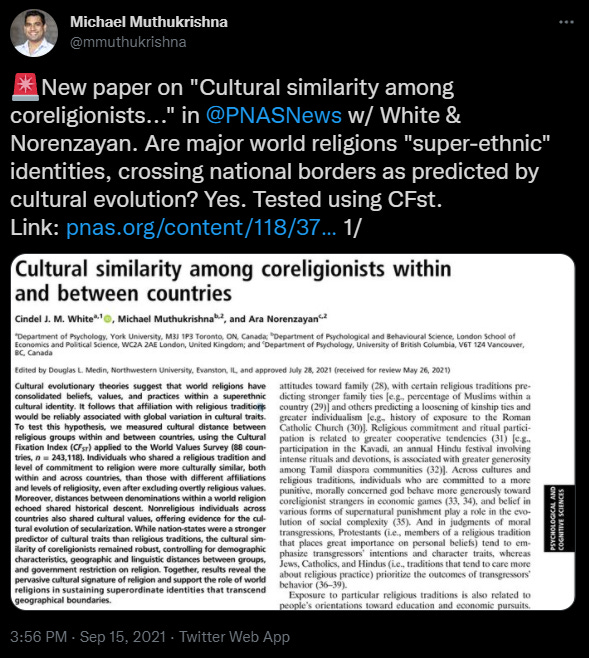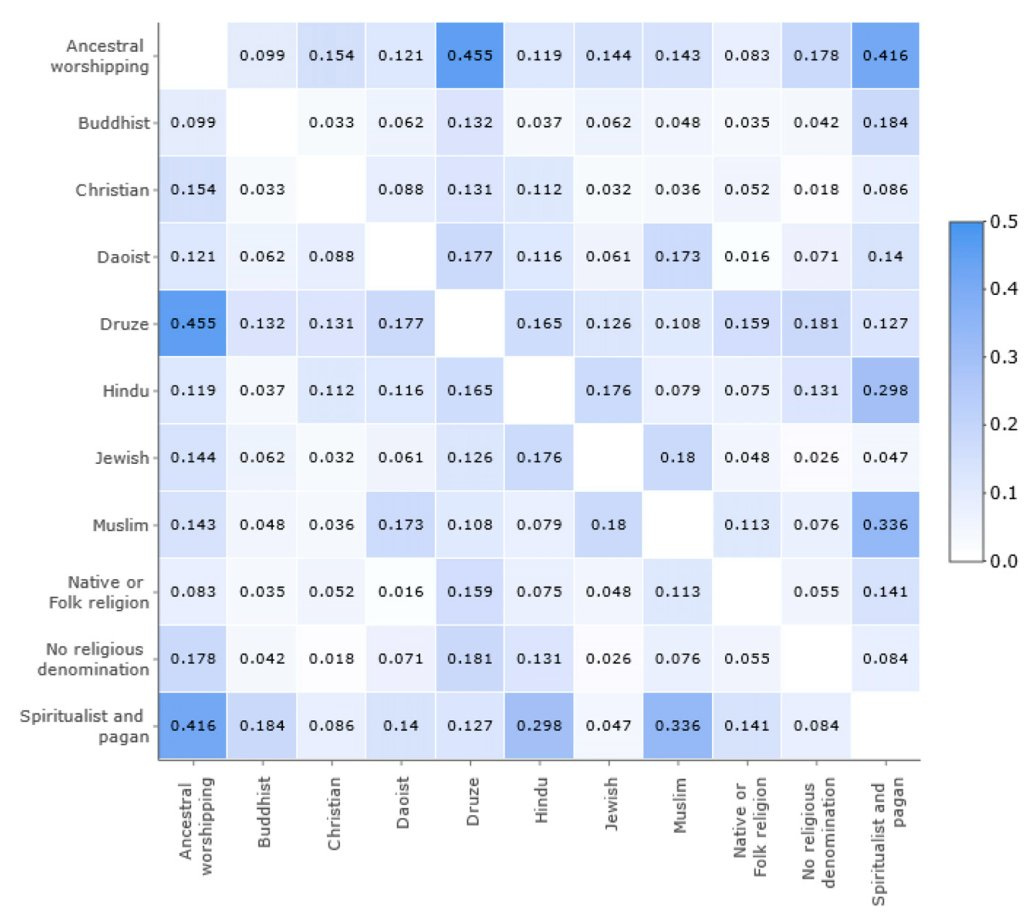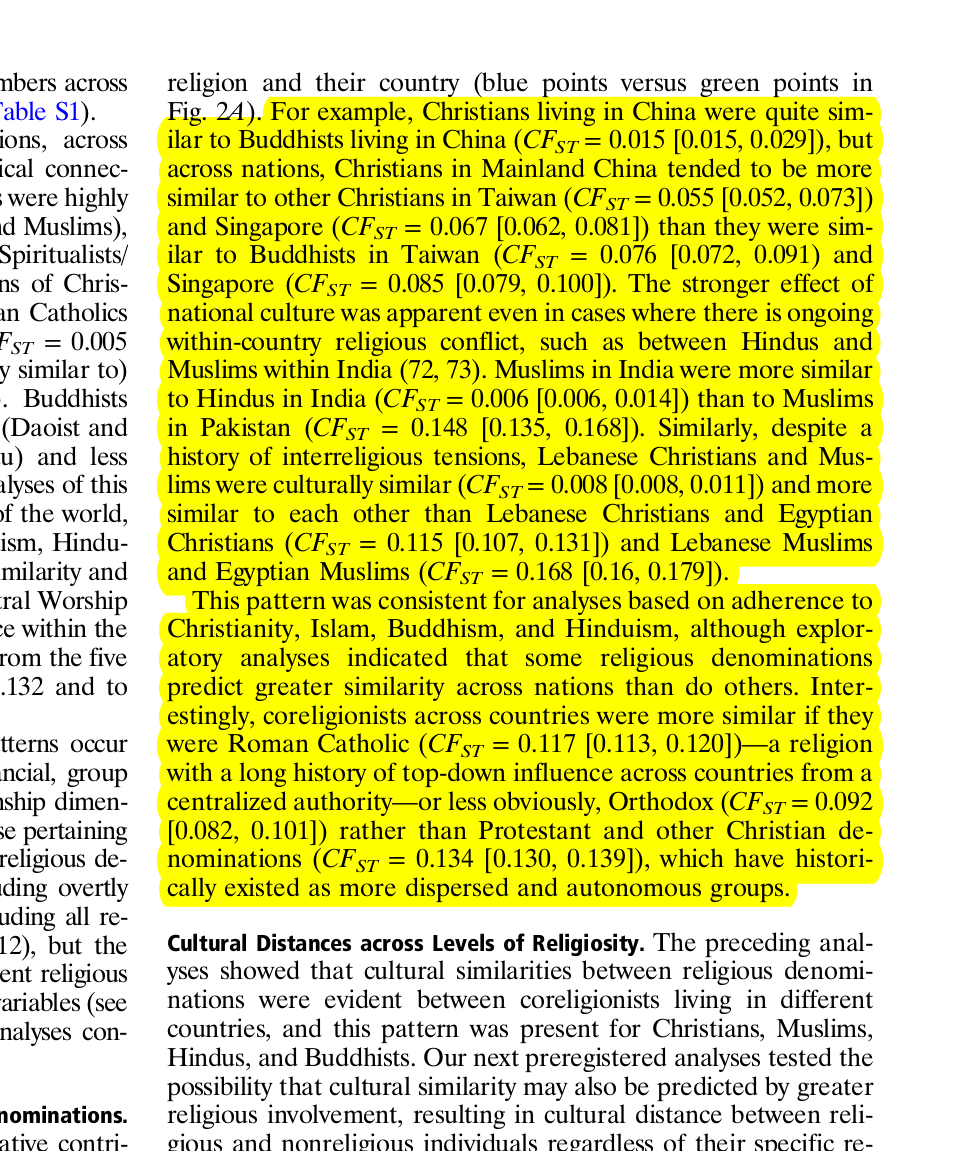This is a summary from a Twitter thread about a new article on “Cultural similarity among coreligionists within and between countries” with Cindel White and Ara Norezayan in PNAS. Paper available at muth.io/coreligionist.

Some quick background: Religions bind people into communities with moral norms about what is right, good, & true. Ever notice that major world religions seem to have some broad stroke similarities like big families and being nice to neighbors? Why is that?
One hypothesis is that having those helped those religions grow in the competition with other religions. Not all religions in history share these features. The Shakers, for example, an offshoot of the Quakers, practiced celibacy not just for a priestly class, but for all.

The Shakers are no longer with us.
But religions also have plenty of differences, not only in explicitly religious beliefs, but in broader cultural values that affect national culture. Jesuits and Mainline Protestants, for example, historically increased levels of education. And Protestant values may help explain America’s traditionalism, individualism, and moralization of work. Religions are also shaped by national culture, taking on regional forms. Here’s a buff, Korean Jesus:

Some have also argued that “religion” is mostly a label or an identity, swamped by national culture – think nominal Christians. Or religion may just predict overtly religious beliefs, rituals, and moral attitudes.
For the cultural-group selection theory to work, major world religions should be “super-ethnic” identities, binding people beyond their ethnicity or national borders. That is, those who share a religion living in different countries should be more similar to those who don’t share the religion.
Using a new method for measuring cultural distance called the Cultural Fixation Index (CFst; read more about it here: https://www.michael.muthukrishna.com/beyond-weird-psychology-measuring-and-mapping-scales-of-cultural-and-psychological-distance/), we looked at cultural distance between major world religions in the World Values Survey. What did we find?
CFst are large enough to have competition between distinct cultural-groups of cultural traits, even if you remove overtly religious beliefs. The “People of the Book”—Christian, Muslim, and Jewish people—share cultural similarities. Christians are about as culturally similar to both Jewish and Muslim people as Americans are to Canadians or Australians are to Brits. But just as the United States is similarly geographically distant from Uruguay and Ukraine, but Uruguay and Ukraine are not geographically close to each other, Jewish and Muslim people are a similar cultural distance as people in the United States and the Philippines.
You can take a look at national cultural distance with this app: https://world.culturalytics.com/

As a side note, Buddhists are interesting. They look like Hindus, as fellow Dharmist, but also like Christians, Muslims & Jews.
But of course, these broad generalizations hide a lot of cultural clustering within countries. Fellow citizens more culturally similar than co-religionists in a different country, but foreigners who share a religion are more similar than those of a different religion. And that similarity is stronger if they’re highly religious.
And this broad generalization was true in our data even for places we didn’t expect. Like Muslims in India and Pakistan.

All of this holds true controlling for religious freedom, geographic, linguistic, & genetic distance.
We also looked at the interaction between national and religious culture, showing that non-American Christians are most similar to Americans. America is still a very Christian country and Christianity might therefore be considered the WEIRDest religion (using America as a proxy for WEIRD). That’s consistent with Joe Henrich’s hypothesis for the role of Christianity in creating WEIRD psychological and cultural traits: https://en.wikipedia.org/wiki/The_WEIRDest_People_in_the_World
And finally, non-Americans with no religious denomination are also similar to Americans without religious traits. That’s consistent with other work showing that the US looks like other secular, developed nations except when it comes to traditional religious values.
Anyway, you can read more in the paper & supplemental: muth.io/coreligionist








